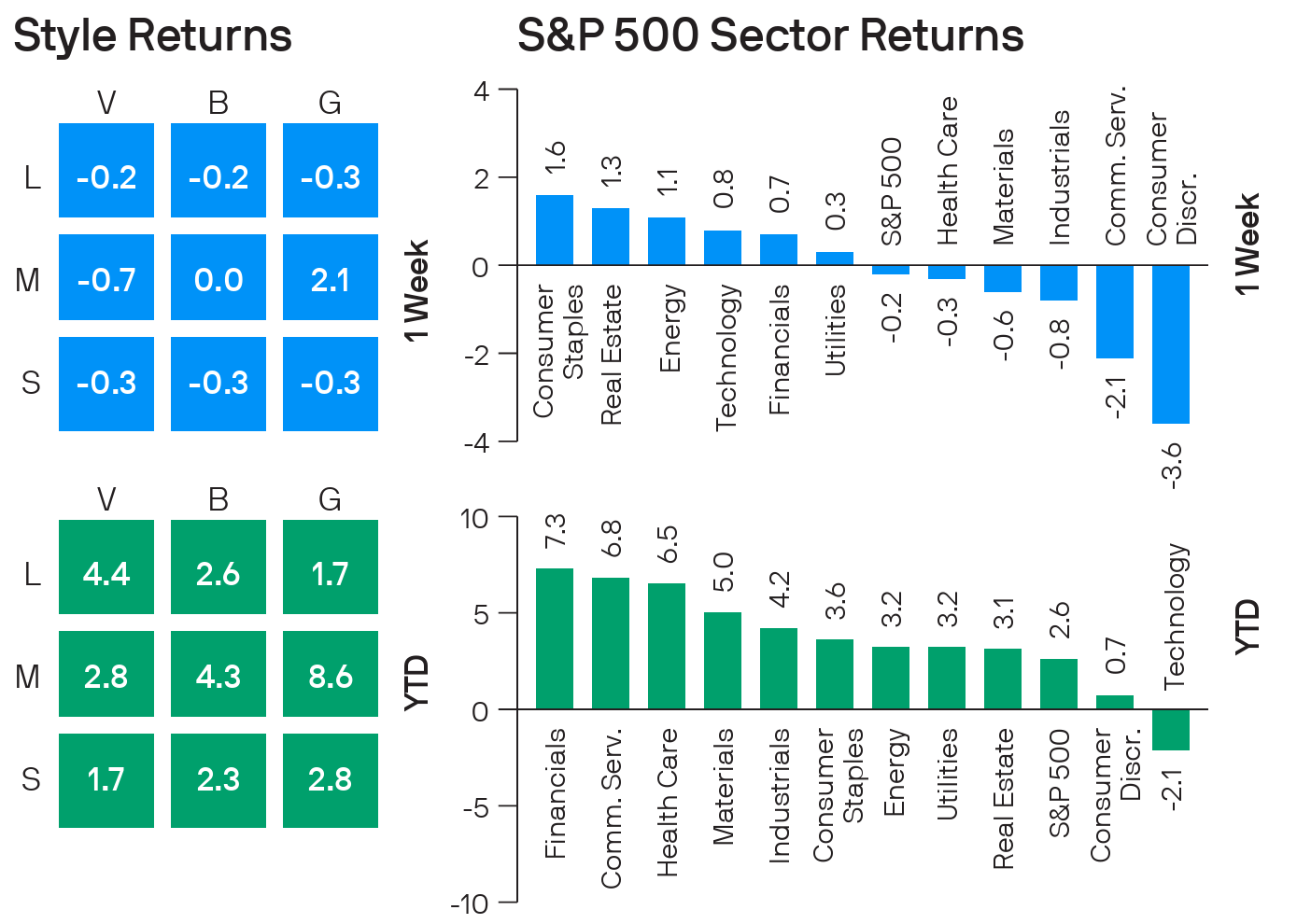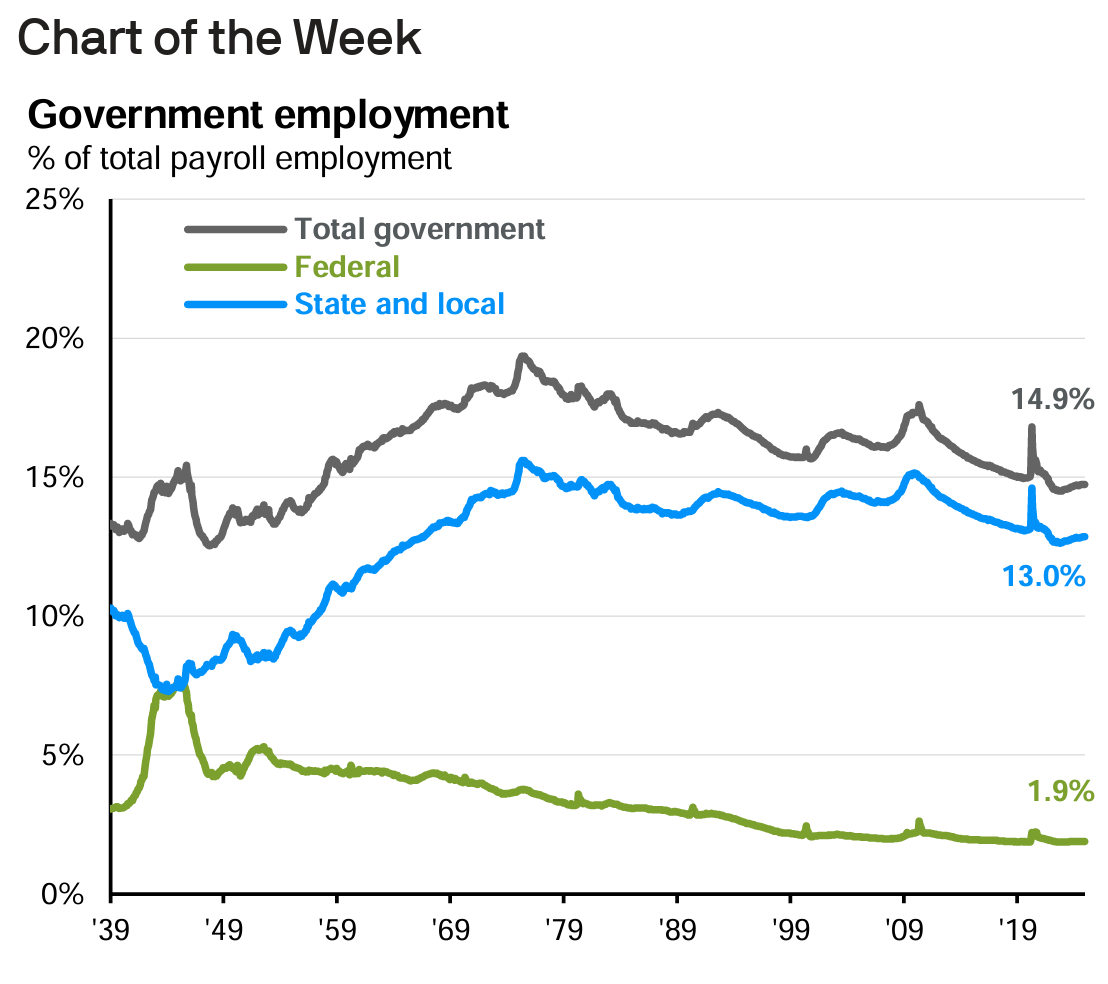
Market Update Week 6
Market Recap
Week of Feb.3 through Feb.7
The S&P 500 index began February with a 0.2% weekly decline as January job gains came in slightly below expectations and US consumer sentiment reached its lowest level since July.
The S&P 500 ended Friday's session at 6,025.99, marking its second consecutive week in the red. It's still up 2.5% for the year.
Government data on Friday showed the US economy added fewer jobs than expected in January, with total nonfarm payrolls up by 143,000 last month versus a consensus estimate for a 175,000 increase. The unemployment rate, however, unexpectedly improved to 4% from December's 4.1%. The rate had been expected to stay at 4.1% for January.
Other data showed US consumer sentiment reached its lowest level since July, while year-ahead inflation expectations hit their highest level since November 2023, according to preliminary February results from the University of Michigan's Surveys of Consumers. The survey indicated concerns regarding the negative impact of the Trump administration's tariff policy.


Thought of the Week*
The current administration is focused on reducing the federal workforce as part of its fiscal strategy, proposing measures like severance packages, hiring freezes, and potential agency eliminations. However, data from the BLS suggests that there may be limited scope for significant cuts. This week's chart illustrates that federal jobs, excluding active-duty military personnel, have been declining as a percentage of total payroll employment since the 1960s. Today, they represent just 1.9% of all jobs, equating to about three million positions. In contrast, state and local governments are much larger employers, accounting for 13.0% of total payroll jobs, but the federal government lacks authority over those positions. Federal employees, on average, earn $106.5k annually, so a 10% reduction in the federal workforce would save only $32 billion per year or 0.5% of the 2025 federal budget. Achieving even a 10% reduction would be challenging, as defense and national security-related agencies make up 70% of federal employment, excluding USPS workers. Given the current geopolitical climate, downsizing in these areas may prove difficult. Additionally, some agencies, like the Federal Aviation Administration, are already understaffed. Reports indicate that 90% of U.S. airport control towers do not meet staffing targets.
It is unlikely that spending cuts will generate enough savings to offset the administration’s tax cut plans. Discretionary spending has been increasingly constrained by the rising costs of mandatory expenditures and interest payments. As a result, fiscal deficits are expected to continue growing, which may prevent any significant decline in long-term interest rates. As a consequence, investors should generally look to the bond market for income and diversification but not capital appreciation
*Source: J.P.Morgan Asset Management
Up Next
Next week's economic data will include two closely watched inflation figures: the consumer price index and producer price index for January. There will also be reports on January retail sales, industrial production and capacity utilization.
All the Best,
Gordon Achtermann, CSRIC®, MBA, CFP®
Gordon@yourbestpathfp.com
703-573-7325
Your Best Path Financial Planning delivers comprehensive planning and investment management to families and individuals, whether you live in Fairfax, Virginia, Northern Virginia, or nationwide.

